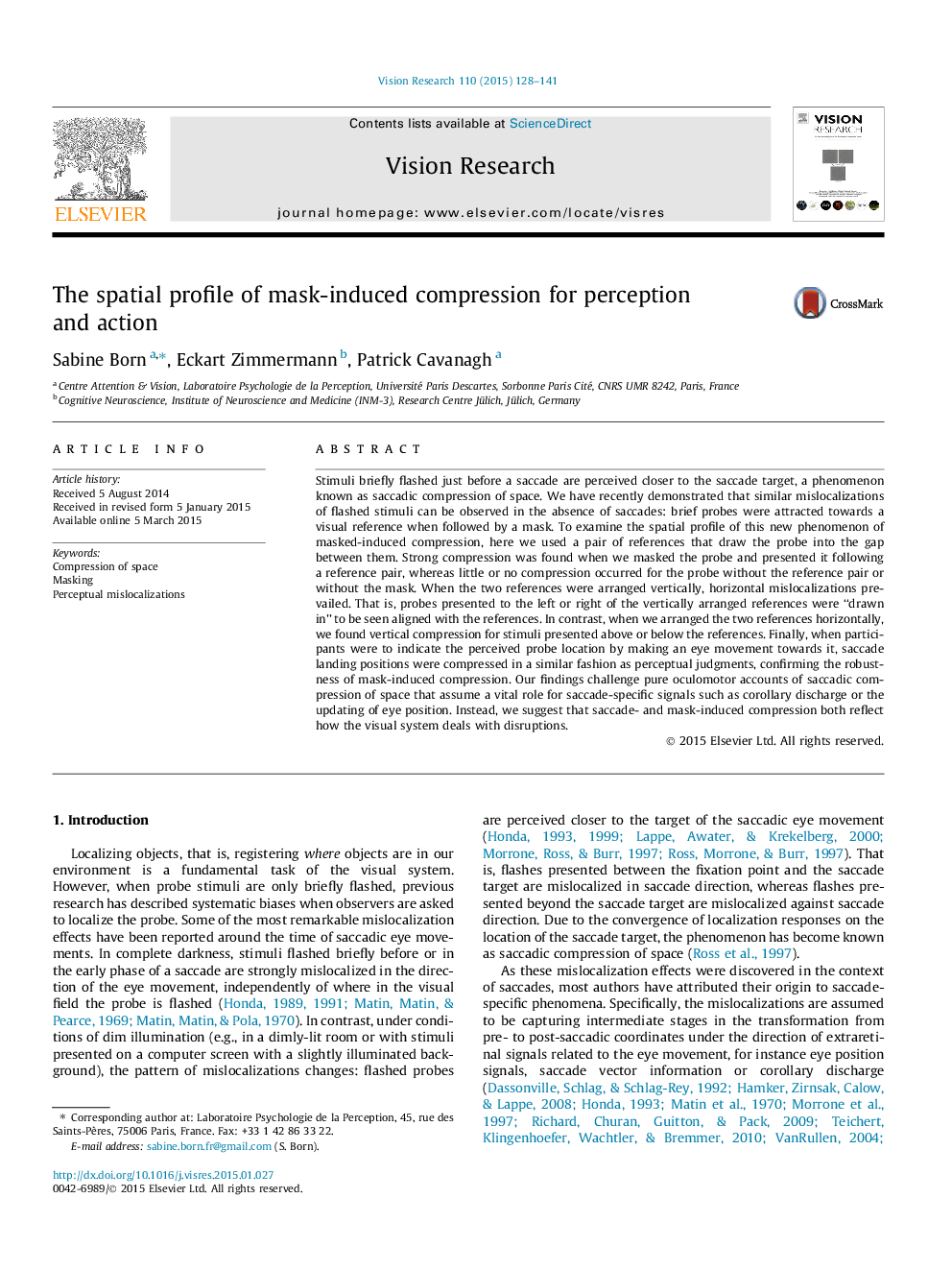| Article ID | Journal | Published Year | Pages | File Type |
|---|---|---|---|---|
| 6203236 | Vision Research | 2015 | 14 Pages |
â¢We find mask-induced compression of space: mislocalizations of flashed stimuli.â¢Depending on stimulus arrangement, horizontal or vertical compression prevails.â¢The effect is found in perception and action: compressed saccade endpoints.
Stimuli briefly flashed just before a saccade are perceived closer to the saccade target, a phenomenon known as saccadic compression of space. We have recently demonstrated that similar mislocalizations of flashed stimuli can be observed in the absence of saccades: brief probes were attracted towards a visual reference when followed by a mask. To examine the spatial profile of this new phenomenon of masked-induced compression, here we used a pair of references that draw the probe into the gap between them. Strong compression was found when we masked the probe and presented it following a reference pair, whereas little or no compression occurred for the probe without the reference pair or without the mask. When the two references were arranged vertically, horizontal mislocalizations prevailed. That is, probes presented to the left or right of the vertically arranged references were “drawn in” to be seen aligned with the references. In contrast, when we arranged the two references horizontally, we found vertical compression for stimuli presented above or below the references. Finally, when participants were to indicate the perceived probe location by making an eye movement towards it, saccade landing positions were compressed in a similar fashion as perceptual judgments, confirming the robustness of mask-induced compression. Our findings challenge pure oculomotor accounts of saccadic compression of space that assume a vital role for saccade-specific signals such as corollary discharge or the updating of eye position. Instead, we suggest that saccade- and mask-induced compression both reflect how the visual system deals with disruptions.
